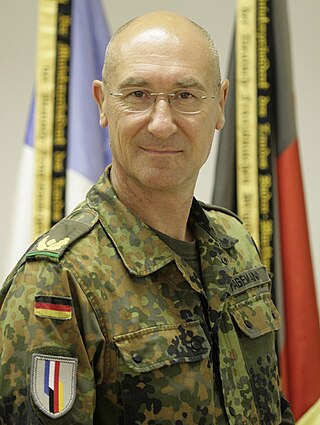Related Research Articles

The Biographical Dictionary of the Extreme Right Since 1890 is a reference book by Philip Rees, on leading people in the various far right movements since 1890. It contains entries for what the author regards as "the 500 major figures on the radical right, extreme right, and revolutionary right from 1890 to the present" . It was published, as a 418-page hardcover, in New York by Simon & Schuster in 1990 (ISBN 0-13-089301-3).

A Burschenschaft is one of the traditional Studentenverbindungen of Germany, Austria, and Chile . Burschenschaften were founded in the 19th century as associations of university students inspired by liberal and nationalistic ideas. They were significantly involved in the March Revolution and the unification of Germany. After the formation of the German Empire in 1871, they faced a crisis, as their main political objective had been realized. So-called Reformburschenschaften were established, but these were dissolved by the Nazi regime in 1935/6. In West Germany, the Burschenschaften were re-established in the 1950s, but they faced a renewed crisis in the 1960s and 1970s, as the mainstream political outlook of the German student movement of that period started learning more towards the left. Roughly 160 Burschenschaften exist today in Germany, Austria and Chile.

This is a list of members of the 4th Reichstag – the parliament of the Weimar Republic, whose members were elected in the 1928 federal election and served in office from 1928 until its dissolution in 1930.

Plötzensee Prison is a men's prison in the Charlottenburg-Nord locality of Berlin with a capacity for 577 prisoners, operated by the State of Berlin judicial administration. The detention centre established in 1868 has a long history; it became notorious during the Nazi era as one of the main sites of capital punishment, where about 3,000 inmates were executed. Famous inmates include East Germany's last communist leader Egon Krenz.
The Rudolf-Diesel-Medaille is an award by the German Institute for Inventions in memory of Rudolf Diesel for inventions and the entrepreneurial and economical implications accounting to the laureate. Since 1953 the award has been presented yearly until 1969 and then irregularly every two or three years.

The Gottbegnadeten-Liste was a 36-page list of artists considered crucial to National Socialist culture. The list was assembled in September 1944 by Joseph Goebbels, the head of the Ministry of Public Enlightenment and Propaganda, and Germany's supreme leader Adolf Hitler.

General of the Infantry is a former rank of the German army. It is currently an appointment or position given to an OF-8 rank officer, who is responsible for particular affairs of training and equipment of the Bundeswehr infantry.

General der Panzertruppe was a General of the branch OF8 rank of the German Army, introduced in 1935. A General der Panzertruppe was a Lieutenant General, above Major General (Generalleutnant), commanding a Panzer corps.
The Gelöbnis treuester Gefolgschaft was a declaration by 88 German writers and poets of their loyalty to Adolf Hitler. It was printed in the Vossische Zeitung on 26 October 1933 and publicised by the Prussian Academy of Arts in Berlin. It was also published in other newspapers, such as the Frankfurter Zeitung, to widen public awareness of the confidence of the signed poets and writers in Hitler as the Chancellor of Germany.
The German Mathematical Society is the main professional society of German mathematicians and represents German mathematics within the European Mathematical Society (EMS) and the International Mathematical Union (IMU). It was founded in 1890 in Bremen with the set theorist Georg Cantor as first president. Founding members included Georg Cantor, Felix Klein, Walther von Dyck, David Hilbert, Hermann Minkowski, Carl Runge, Rudolf Sturm, Hermann Schubert, and Heinrich Weber.
Members of the Bavarian Maximilian Order for Science and Art, awarded to acknowledge and reward excellent and outstanding achievements in the fields of science and art. It is based in Bavaria, Germany.

The Collegium Fridericianum was a prestigious gymnasium in Königsberg, Prussia. Alumni were known as Friderizianer.

Bekenntnis der Professoren an den Universitäten und Hochschulen zu Adolf Hitler und dem nationalsozialistischen Staat officially translated into English as the Vow of allegiance of the Professors of the German Universities and High-Schools to Adolf Hitler and the National Socialistic State was a document presented on 11 November 1933 at the Albert Hall in Leipzig. It had statements in German, English, Italian, and Spanish by selected German academics and included an appendix of signatories. The purge to remove academics and civil servants with Jewish ancestry began with a law being passed on 7 April 1933. This document was signed by those that remained in support of Nazi Germany.

Große Berliner Kunstausstellung , abbreviated GroBeKa or GBK, was an annual art exhibition that existed from 1893 to 1969 with intermittent breaks. In 1917 and 1918, during World War I, it was not held in Berlin but in Düsseldorf. In 1919 and 1920, it operated under the name Kunstausstellung Berlin. From 1970 to 1995, the Freie Berliner Kunstausstellung was held annually in its place.
References
- ↑ "The members of the Reich Cultural Senate" ("Die Mitgliedes der Reichskultursenats"). Dresdner Neueste Nachrichten, 16 November 1935, p. 2.
- ↑ "Clear order in cultural life" ("Klare Ordnung im Kulturleben"). Der Freiheitskampf , 16 November 1935, pp. 1–2.
- ↑ Hakenkreuzbanner newspaper, 16 November 1935, No. 530.